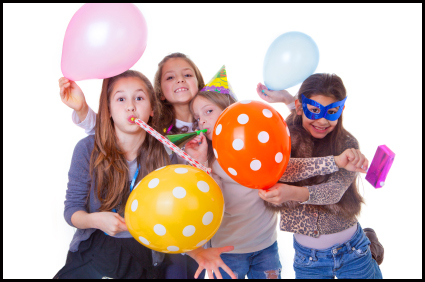 New Families and New Traditions
New Families and New Traditions
One of the joys of starting a new family is choosing traditions and rituals to share with your children. Some ‘traditional’ traditions include: Dad makes a toast before eating Thanksgiving dinner, the family has dinner at Grandma’s house after church, mass or synagogue on special holidays and the family attends the sunrise service on Easter, midnight mass on Christmas Eve or lights Hanukah candles together with three generations of family members.
When you have your own family (as opposed to the one you are born into), you may want to develop some of your own rituals and traditions with your children and family. Rituals are acts that are carried out routinely with a specific intent. One example of a ritual is saying a prayer before a meal or at bedtime.
Rituals were originally religious in nature, but as a society we have co-opted rituals as part of daily life. Some examples are: taking a long, hot bath to relax, having wine or a cocktail in the evening to unwind, playing a specific song (Take Me Out to the Ballgame) at sporting events to build camaraderie, taking a long run or walk in the morning to prepare for the day and using secret handshakes or code words to indicate you are part of a club or organization.
Traditions are experiences (that may include rituals) that are passed down from one generation to the next. You may want to incorporate some of the traditions from both of your families with your children, and develop new ones. One way to decide on rituals and traditions for your family is to spend some time considering your personal values and beliefs, and how you would like your children to experience and express those, both in daily life and special occasions.
Create a Vision for Your Children
Spend some time together as a couple talking about what you want for your children. Who would you like them to be in 20 years? What character traits would you like them to have as adults? Are there specific values and beliefs that you would like for them to adopt? What specific causes would you like them to care about? Sketch out a vision for each child. Your vision statement for your children should include ideals that both of you want for your children. It might look like this:
“Mary will be a bright, independent young woman who is confident, caring and well-balanced. She will be a wonderful parent (if she chooses) who models good self care, healthy boundaries and great relationships. She is a wonderful friend and companion – loyal, caring and respectful. Mary is compassionate – she loves animals and cares greatly for all living things. Nothing compares to Mary’s generosity. She gives of her time, talents and resources without depleting herself or her assets. Her ability to balance her own needs while caring for others is admirable. Mary has the ability to lead and follow – she is diverse, committed and dependable in her work life.”
Remember, you are creating a vision for your adult children’s lives based on your wishes, hopes and dreams for them. Obviously, there are no guarantees they will embrace your vision, but your job as parents is to mold, guide, direct and inform your children to be healthy, functional adults. Sharing your hopes and dreams for who they will become is part of the process. Once you do your job, there will be other forces that may influence them to be different from your vision. That should not preclude your doing your work as parents.
 Make a List and Check it Twice
Make a List and Check it Twice
After creating a vision statement, you can begin to think about rituals and traditions to share with your children in support of that vision. You might go back to the statement and circle key words that indicate the values and traits you want to cultivate in each of your children.
For Mary, the list of values, traits and skills you want to develop are: bright and intelligent, confidence, caring, well-balanced, compassionate, loves animals and all living things, good self care, healthy boundaries, great relationships, generosity, leadership, ability to follow others, diverse, committed and dependable.
While that may seem like a very ambitious list, developing rituals and traditions to teach, model and hone these characteristics should not be that difficult. After all, you will be molding her from birth and have opportunities daily to do so.
Keep in mind that much of this will be learned through her interactions with you and her observations of how you (and others) live your lives. What does that mean? That your life must model the characteristics you want for Mary!
Brainstorm to Create Rituals and Traditions for Your Children
Now comes the fun part – brainstorming. Brainstorming entails sitting down as a couple (include other close family members if you want) and coming up with as many ideas as possible to develop the characteristics on your list in your children. In brainstorming sessions, nothing is off limits – just toss out any and all ideas (you will eliminate those that won’t work later). Go through your list and answer the following for all of the items on the list.
How does one develop/learn confidence?
1. By taking risks and trying new things
2. By making mistakes and learning from them
3. By having role models who are confident
4. By mastering skills and abilities
5. By accepting responsibility and taking action to correct mistakes
What rituals and traditions can we develop/teach/model to cultivate confidence in Mary? (Things we can do on a daily, weekly, monthly, bi-monthly, semi-annual or annual basis.)
1. During the school break each year the family chooses a project/hobby to practice for the summer, ie. clean out closets and give away things no longer used or needed to someone in need, or learn to scuba dive/play tennis, etc.
2. In weekly family meetings, everyone shares a mistake they made and what they learned from it.
3. Each child and one parent team up weekly to plan and prepare a meal and activity for the evening.
4. On Thanksgiving weekend the family goes into the woods to plant a tree.
5. On New Year’s Eve the family volunteers at a nursing home together.
6. Each child chooses a musical instrument or sport to learn when they enter high school.
Many of the ideas you come up with will teach, model and hone several things on the list. For example, the ideas listed above to teach confidence also include life lessons, rituals and traditions that develop leadership, compassion, generosity, care for living things and more.
This method may take several hours to complete. No worries – you don’t have to figure out all the rituals and traditions for your children’s lives in one sitting. What is important is that you recognize how you can cultivate the characteristics you want for your children while passing on cherished rituals and traditions for daily life and special occasions.
After you answer these two questions for each of the traits on your list, as a couple you can choose which ones you want to pursue. Some may be appropriate to begin when the children are older, and others may be traditions or rituals you want to implement immediately. Try them out to see if you all enjoy them. If not, try something different. Keep your lists so you can go back to it later if you want. Consistency is the key to creating meaningful traditions and rituals that will form lifelong memories for your family. The most important thing to remember is to have fun and ensure that the rituals and traditions further your larger goals of raising great kids!
_________________________________________________________________________________________________________________________________
Davies, Leah. "Family Traditions and Children." Family Traditions and Children by Leah Davies, M.Ed. Web. 13 Oct. 2013.
Hardy, Bethany. "5 Meaningful Holiday Traditions for Kids." PBS. PBS. Web. 13 Oct. 2013.
Markham, Laura. "37 Meaningful December Traditions for Families." A-ha Parenting. Web. 13 Oct. 2013.
About the Author
 LuAnn Pierce, LCSW
LuAnn Pierce, LCSWI am a clinical social worker, therapist and writer. Currently, I offer online therapy and coaching services to people in Colorado and Wyoming. As a provider for the CO Department of Vocational Rehabilitation and the National MS Society, my expertise in counseling people who have disabilities and chronic illness is considerable. I have written for About.com, DailyRx.com, Theravive.com, GoodTherapy.org, SelfHelpMagazine.com and contribute to several other online health and mental health sites.
Office Location:
19th & Dahlia
Denver, Colorado
80220
United States
Phone: 303-910-2425
Contact LuAnn Pierce, LCSW
Professional Website:
http://HireASocialWorker.com